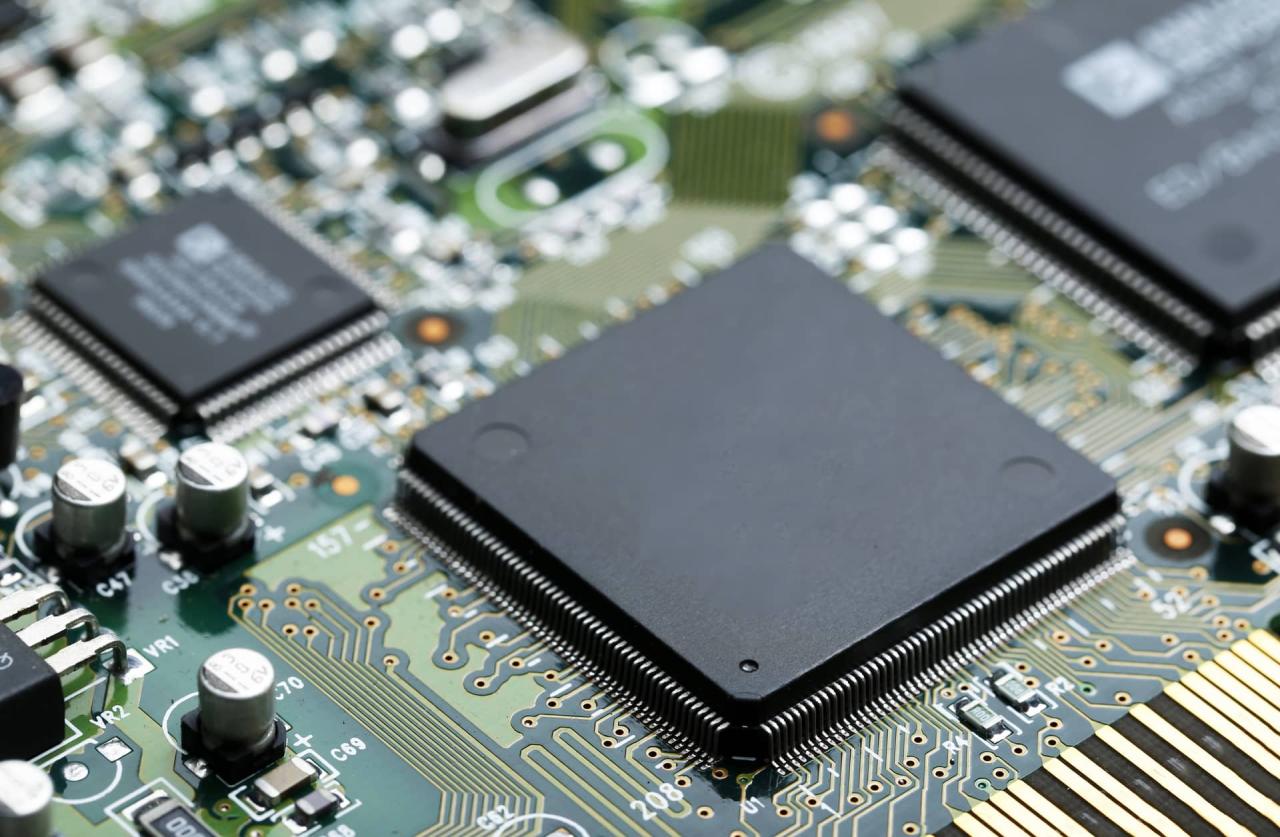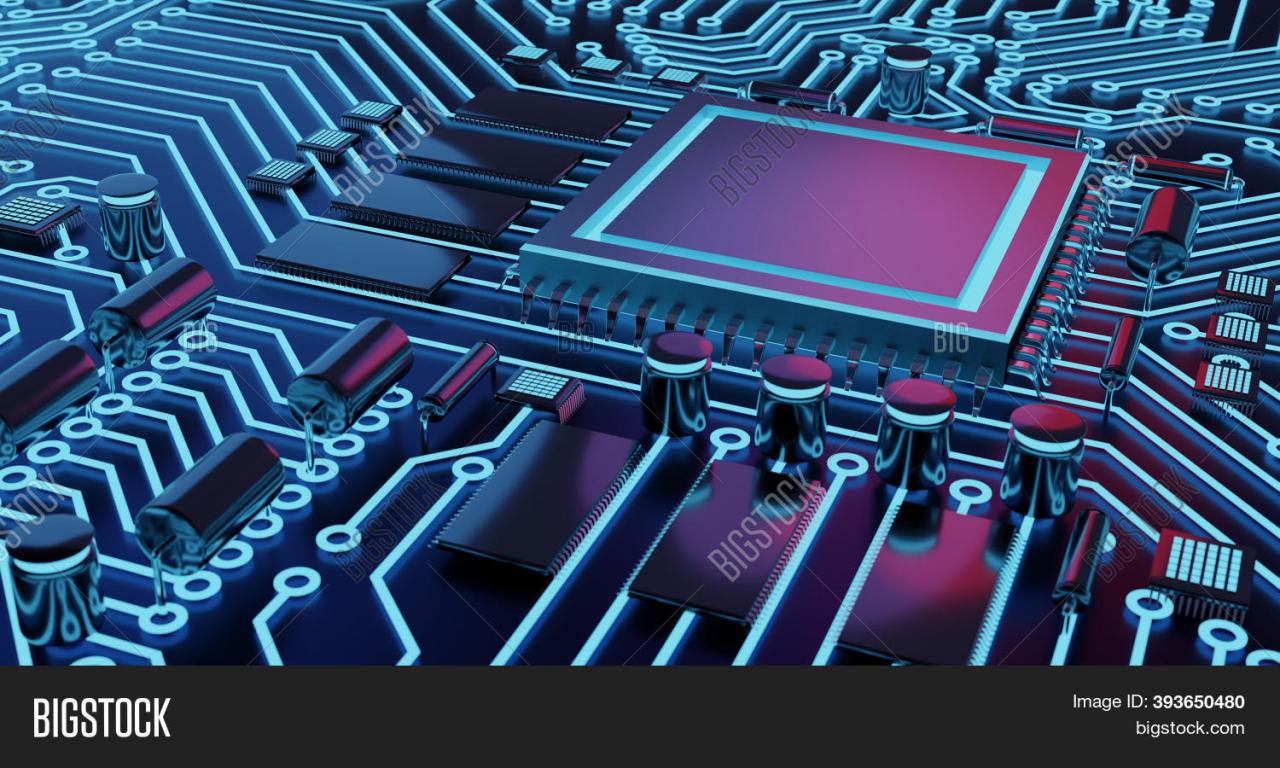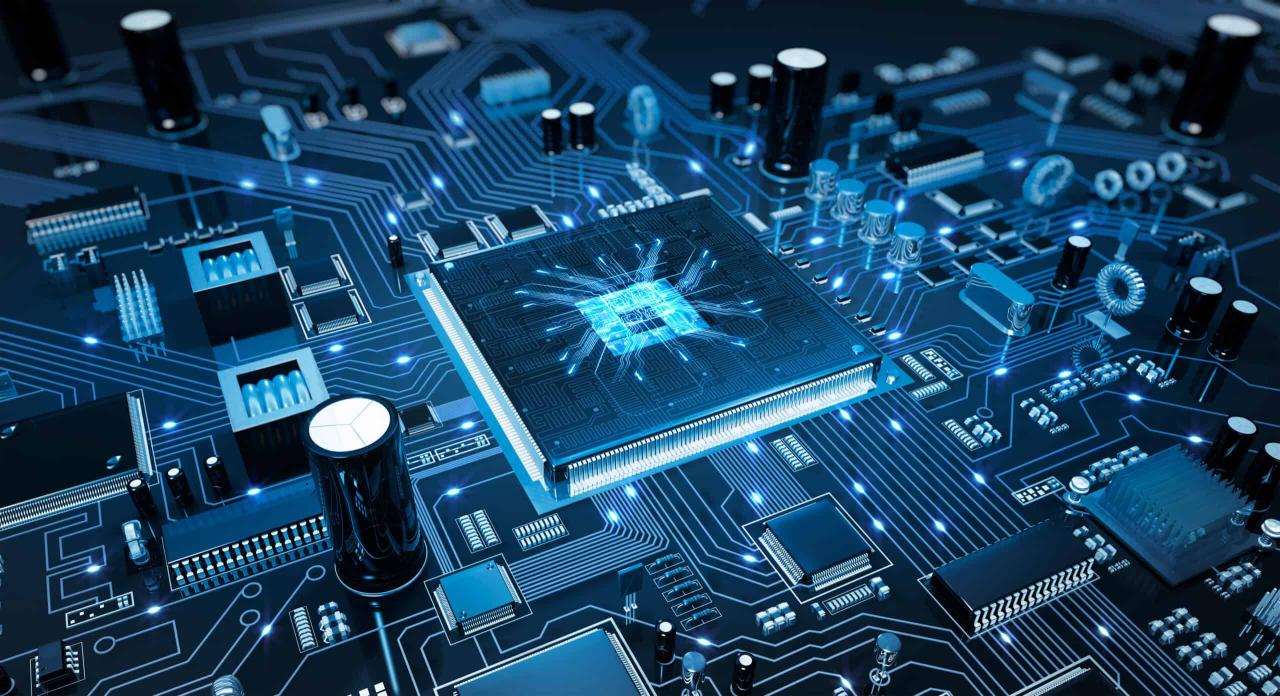Chip iPhone is at the core of Apple’s mobile technology, driving speed and enhancing functionality in ways that transform user experience. The importance of these chips cannot be overstated, as they are pivotal to the iPhone’s performance, influencing everything from app efficiency to everyday multitasking capabilities. As we delve deeper into the intricacies of iPhone chips, we uncover how architecture and design have continually evolved to meet the demands of modern mobile computing.
The journey of iPhone chips showcases a remarkable evolution, reflecting significant technological advancements over the years. From the early models to the latest iterations, the enhancement in performance metrics has paralleled the rapid growth in mobile app capabilities. Understanding this evolution will not only highlight the past achievements but also set the stage for what’s on the horizon in chip technology.
Importance of the Chip in iPhone Performance

The chip architecture in an iPhone plays a pivotal role in determining the overall performance, speed, and functionality of the device. As the central processing unit (CPU) and the heart of the smartphone, the chip directly influences how efficiently the iPhone operates, executes tasks, and provides a seamless user experience. Understanding the significance of the chip offers insights into what makes iPhones leading devices in the competitive smartphone market.
The chip in an iPhone, such as the A-series processors, is engineered to deliver exceptional performance. With advancements in manufacturing technology, these chips are designed to handle complex computations and demanding applications with ease. The integration of high-performance cores allows for multitasking without sacrificing speed. Additionally, the architecture of these chips, combining CPU, GPU, and neural processing units (NPUs), maximizes efficiency and optimizes battery life, creating a balance that enhances user experience.
Chip Architecture and Device Efficiency
The architecture of the chip significantly affects the efficiency of the device and the quality of user interactions. The design incorporates various cores optimized for performance and efficiency, allowing for dynamic task allocation. This results in improved responsiveness and lower power consumption during everyday tasks.
- High-performance cores: These cores are dedicated to demanding applications and tasks, such as gaming and video editing, ensuring peak performance when required.
- Energy-efficient cores: These cores handle lighter tasks, extending battery life by consuming less power during routine operations.
- Neural Engine: This component accelerates machine learning tasks, enhancing functionalities like photography and voice recognition, making interactions more intuitive.
The combination of these elements ensures that users experience a fluid and responsive device, regardless of the tasks executed. Additionally, the chip’s ability to manage resources plays a crucial role in maintaining overall device temperature, preventing overheating, and ensuring longevity.
Comparative Chip Performance Across iPhone Models
The evolution of chip technology can be observed across different iPhone models, showcasing enhancements in performance with each iteration. For instance, the transition from the A12 Bionic chip in the iPhone XS to the A15 Bionic chip in the iPhone 13 demonstrates a significant leap in processing capabilities.
| iPhone Model | Chip | CPU Speed (GHz) | GPU Performance |
|---|---|---|---|
| iPhone XS | A12 Bionic | 2.5 | 4-core GPU |
| iPhone 11 | A13 Bionic | 2.65 | 4-core GPU |
| iPhone 13 | A15 Bionic | 3.1 | 4-core GPU |
The A15 Bionic chip not only provides a higher clock speed but also introduces a more advanced GPU capable of delivering up to 30% faster graphics performance compared to the A12 chipset. This performance boost is particularly relevant for users engaging in high-end gaming or utilizing graphics-intensive applications. Such advancements highlight the importance of chip technology in enhancing user experience and ensuring that newer models continually outperform their predecessors.
“The chip is the foundation of the iPhone’s performance, dictating not only speed but also the efficiency and capabilities of the device.”
Evolution of iPhone Chips
The journey of iPhone chips began in 2007 with the original iPhone, which laid the foundation for Apple’s trajectory in mobile processing power. Each subsequent model introduced a new chip, reflecting not just incremental improvements, but substantial technological leaps that have fundamentally transformed mobile computing.
The evolution of iPhone chips illustrates significant advancements in semiconductor technology, energy efficiency, and integrated architectures. Over the years, Apple has transitioned from using third-party processors to developing its own custom-designed chips, which has resulted in enhanced performance and capabilities tailored specifically for iOS.
Key Milestones in iPhone Chip Development
The development of iPhone chips has been marked by several pivotal milestones that showcase Apple’s innovative approach. The introduction of each new chip has brought with it features that have redefined mobile computing standards.
- Apple A4 (2010): The first chip designed by Apple, powering the iPhone 4, it marked a shift toward custom silicon and improved performance and efficiency.
- Apple A5 (2011): Featured in the iPhone 4S, this chip introduced dual-core processing, enhancing multitasking capabilities and graphics performance.
- Apple A6 (2012): Launched with the iPhone 5, the A6 brought a significant performance boost with its custom CPU architecture, enabling faster processing while maintaining battery efficiency.
- Apple A7 (2013): The first 64-bit chip in a smartphone, integrated into the iPhone 5S, it revolutionized mobile computing by allowing applications to access more RAM and perform complex tasks more efficiently.
- Apple A8 (2014): With improved graphics and CPU performance, the A8 supported advanced gaming and high-definition video processing, providing a seamless user experience.
- Apple A9 (2015): Featured in the iPhone 6S and 6S Plus, the A9 chip integrated a more efficient architecture and offered significant gains in speed and graphics performance, allowing developers to create more demanding applications.
- Apple A10 Fusion (2016): Launched with the iPhone 7 and 7 Plus, it introduced a quad-core design that optimized performance while balancing power consumption, allowing for longer battery life.
- Apple A11 Bionic (2017): This chip powered the iPhone 8 and X, featuring a neural engine for machine learning tasks, which significantly improved the capabilities of augmented reality applications.
- Apple A12 Bionic (2018): Introduced with the iPhone XS, this chip offered enhanced machine learning performance and improved graphics processing, positioning iPhones as powerful tools for both gaming and professional applications.
- Apple A13 Bionic (2019): Featured in the iPhone 11 series, it focused on efficiency and performance, allowing for longer battery life while supporting advanced photography and gaming features.
- Apple A14 Bionic (2020): This chip, found in the iPhone 12 series, was built on a 5nm process, marking the first in the industry, which led to improved performance and energy efficiency.
- Apple A15 Bionic (2021): Launched with the iPhone 13 series, it included enhanced graphics capabilities and machine learning performance, further elevating mobile app experiences.
- Apple A16 Bionic (2022): Featured in the iPhone 14 Pro models, this chip emphasized extreme efficiency and performance for demanding applications, supporting high refresh rate displays and advanced computational photography.
The advancements in these chips have had profound effects on mobile computing, enabling more sophisticated applications and seamless multitasking capabilities. The introduction of specialized cores for machine learning, improved graphics rendering, and enhanced power management have allowed developers to create experiences that were previously impossible on mobile devices.
“With each new chip, Apple has not only pushed the boundaries of performance but has also redefined what users can expect from their mobile devices.”
In summary, the evolution of iPhone chips reflects a commitment to innovation and performance that has continually reshaped the mobile landscape, setting new benchmarks for what smartphones can achieve.
Future of iPhone Chip Technology

As the landscape of mobile technology continues to evolve, the future of iPhone chips promises to be a game-changer, delivering enhanced performance and innovative features. With each new iteration of the iPhone, Apple’s chip technology has been at the forefront, driving the seamless integration of hardware and software. The upcoming advancements in chip design are expected to leverage emerging technologies and redefine user experiences.
The next generation of iPhone chips is predicted to be characterized by significant innovations that enhance processing capabilities, efficiency, and multi-tasking performance. As Apple continues its investment in silicon development, the integration of artificial intelligence (AI) and machine learning will play a pivotal role in shaping future chip designs. These advancements are anticipated to enable real-time data processing, improved battery management, and advanced computational photography, thereby elevating the overall iPhone experience.
Predicted Innovations and Their Implications
The forthcoming iPhone chips are expected to incorporate several groundbreaking features that will significantly impact functionality. These anticipated innovations include the following:
- Increased Core Count: Future chips are likely to feature a higher number of cores, facilitating better multitasking and improved performance in demanding applications.
- AI and Machine Learning Enhancements: Built-in AI capabilities will allow for smarter processing, such as predictive text and personalized experiences based on user habits.
- 5G Optimization: With the continuous rollout of 5G technology, future chips will include more advanced 5G capabilities, ensuring faster data speeds and improved connectivity.
- Energy Efficiency: Innovations in chip architecture are expected to enhance energy efficiency, extending battery life while maintaining high performance during intensive tasks.
- Enhanced Graphics Processing: Improved GPU capabilities will allow for more realistic graphics in gaming and augmented reality (AR) applications, pushing the boundary of mobile gaming and AR experiences.
The integration of AI and machine learning into future iPhone chips will also lead to significant user experience enhancements. For example, the anticipation of chips capable of processing natural language more effectively could result in smarter virtual assistants that understand context and nuances better than ever before.
Comparison of Current and Future iPhone Chips
When comparing anticipated features in future iPhone chips to current models, several distinctions become evident. The following table Artikels key differences that highlight the expected trajectory of chip evolution:
| Feature | Current Models | Future Models |
|---|---|---|
| Core Count | Up to 6 cores (A15 Bionic) | Up to 12 cores |
| AI Processing | Basic machine learning capabilities | Advanced AI processing with neural engine enhancements |
| 5G Support | Sub-6 GHz and mmWave | Enhanced 5G with support for faster bands |
| Battery Efficiency | Good, but limited under high load | Significantly enhanced, allowing for extended usage |
| Graphics Performance | Capable of handling 4K graphics | Support for 8K and advanced gaming graphics |
The trajectory of iPhone chip technology indicates an exciting future, with each innovation promising to vastly enhance user experience and functionality. As Apple continues to lead the charge in mobile processing technology, consumers can expect their devices to become increasingly sophisticated, intelligent, and capable.
Chip Manufacturing Process

The production of iPhone chips is a meticulous process that combines advanced technology and high precision. Each chip is designed to optimize the performance of the iPhone, supporting functionalities from processing power to energy efficiency. The manufacturing process involves several key stages, which include design, fabrication, and testing, all of which are essential for producing chips that meet Apple’s stringent quality standards.
The chip manufacturing process begins with the design phase, where engineers use sophisticated software tools to create the architecture and layout of the chip. Once the design is finalized, it moves to the fabrication stage, where raw materials are transformed into functional chips. This stage involves the use of photolithography, etching, and deposition techniques on silicon wafers. The final step is testing, ensuring that each chip performs as expected before it is integrated into the iPhone.
Design and Fabrication
The design and fabrication of iPhone chips are critical to their performance. The design phase uses Computer-Aided Design (CAD) tools to create intricate layouts that dictate how the chip will function.
The fabrication process encompasses several vital steps:
1. Wafer Preparation: Silicon wafers are sliced from a larger silicon ingot, forming the substrate on which chips are built.
2. Photolithography: A photoresist layer is applied to the wafer, and ultraviolet light is used to create a pattern on the wafer that corresponds to the chip design.
3. Etching: The exposed parts of the wafer are etched away, forming the microscopic circuits and pathways that make up the chip.
4. Doping: Certain areas of the silicon are infused with impurities to modify their electrical properties, allowing the creation of p-type and n-type semiconductors.
5. Deposition: Various materials, such as metals and dielectrics, are deposited onto the wafer to create connections and insulators.
This meticulous process results in highly complex chips that can contain billions of transistors within a tiny space, enabling sophisticated functionalities.
Materials Used in Chip Manufacturing, Chip iphone
The materials used in chip manufacturing are crucial for ensuring the reliability and efficiency of the final product. Silicon is the primary material due to its effective semiconductor properties. However, several other materials are essential in the manufacturing process:
– Silicon: Forms the base structure of the chip.
– High-K Dielectrics: Used to create insulative barriers that prevent signal loss and power leakage.
– Copper and Aluminum: Employed for interconnections between transistors, as they provide excellent conductivity.
– Polymers: Utilized in photoresist applications during the photolithography process.
Each material’s quality directly impacts the performance and longevity of the iPhone chips, making material selection vital to the manufacturing process.
Challenges in Semiconductor Industry
The semiconductor industry faces numerous challenges that affect iPhone chip production. These challenges can impact supply chains, manufacturing processes, and technology development. Some of the notable challenges include:
– Supply Chain Disruptions: Global events, such as the COVID-19 pandemic, have led to shortages of raw materials and components, affecting production timelines.
– Technological Complexity: As chips become more advanced, the complexity of their design and manufacturing increases, requiring significant investments in research and development.
– Environmental Regulations: Manufacturers must adhere to stringent environmental regulations, impacting production processes.
– Market Demand Fluctuations: The rapid changes in consumer demand for electronic devices can lead to imbalances in supply and demand, complicating production planning.
These challenges necessitate constant innovation and adaptation in the semiconductor industry, ensuring that companies can meet the evolving needs of consumers while maintaining high standards of quality and performance in chip production.
FAQ Corner: Chip Iphone
What is the role of the chip in an iPhone?
The chip in an iPhone is crucial for processing tasks, enhancing speed, and improving overall device functionality.
How often does Apple update its chip technology?
Apple typically updates its chip technology with each new iPhone release, which usually occurs annually.
What materials are commonly used in iPhone chip manufacturing?
Common materials include silicon, metals like copper, and various polymers essential for chip design and function.
How does chip architecture affect user experience?
Chip architecture determines processing speed and efficiency, impacting how smoothly apps run and how quickly tasks are executed.
What challenges does the semiconductor industry face?
Challenges include rising production costs, supply chain issues, and the need for continuous innovation to keep up with technological advancements.
The Samsung Galaxy S II marked a significant milestone in smartphone technology, introducing features that set the standard for future devices. Its sleek design and powerful performance made it a favorite among tech enthusiasts, paving the way for Samsung’s dominance in the mobile market.
When discussing innovations, the Samsung Galaxy Note 7 often comes to mind due to its combination of a stunning display and unique S Pen functionality. Despite its initial popularity, it faced challenges that ultimately impacted its legacy in the smartphone arena, highlighting the importance of safety in device design.